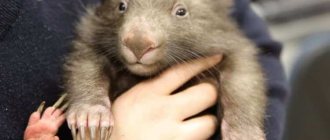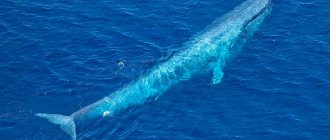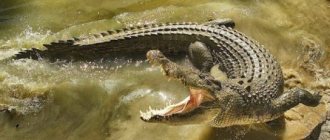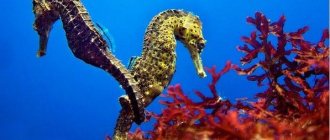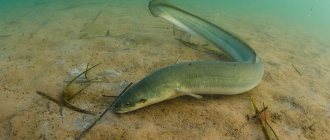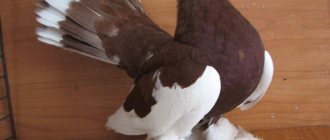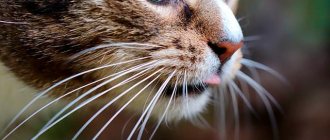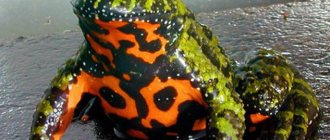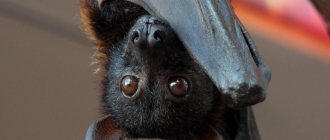The frog's life cycle, gametogenesis, fertilization and other seasonal events depend on numerous external factors. The life of almost all amphibians depends on the number of plants and insects in the pond, as well as the temperature of the air and water. There are various stages of development of frogs, including the larval stage (egg - embryo - tadpole - frog). The metamorphosis of a tadpole into an adult is one of the most striking transformations in biology, as these changes prepare an aquatic organism for terrestrial existence.
Tips for specific tadpole species
Dwarf frog: These aquatic frogs do not require rookeries or dry areas. They do not need to be transferred to the earth's environment.
African clawed frog: Like the dwarf frog, these frogs are entirely aquatic and do not require terrestrial space in their environment.
Eastern Fire-bellied Toads: Despite their name, these frogs require a semi-terrestrial habitat. You will need to provide a transition stage where the almost frog can escape from its watery home. If possible, set the hatching water basin at a 45-degree angle so they have an easy slope to climb.
White's Tree Frog: After the aquatic tadpole stage, these frogs would prefer to live in a moist, tree-loving environment. As with the above species, ensure that the tadpole stage can begin to expand its earthly time.
American Green Tree Frog: Like their other tree frog friends, this species will need to transition to a terrestrial habitat.
Horned Frogs: Although they don't need much water, you will need to provide a shallow bowl of warm RO water. If your aquarium environment is not humid enough, your frog will let you know by sitting in its tank.
Tadpole Environment
Tadpoles should be separated from their parents and kept in individual containers. You can move the tadpoles once they emerge using a washcloth or small cup. Depending on the species, you may have just a few tadpoles or several dozen tadpoles.
Reverse osmosis water works best for tadpoles. You can buy it in bottles or buy a reverse osmosis filter. Depending on the species, you may need to adjust the pH and temperature. Some species, such as dart frogs, can benefit from tannin-rich, low pH water by adding a variety of leaves.
As with all other amphibians, water quality is a key factor. It is best to use a low flow filter to prevent the tadpoles from being blown away. A simple sponge filter works best for this step. Some very small tadpoles may be too small to be kept with any kind of filter, so they will rely on you to change the water. Monitor the water quality and change the water regularly. If you notice a strange smell, it's time to change the water!
What does a grass frog look like and how is it different from a frog frog?
The grass frog (Rana temporaria) is a member of the family of true frogs (Ranidae). This is a fairly large amphibian: the length of the amphibian reaches 10 cm. The body is massive, the head is large. The color of the amphibian can vary from beige to chocolate. Dark spots of various shapes and sizes, as well as tubercles, are scattered along the upper side of the body. The belly is light, with a yellowish or greenish tint, usually with a dark marble pattern. A dark temporal spot stretches from the posterior edge of the eye through the eardrum to the base of the forelimb.
In males, the body is more slender, the slits of paired resonators are in the corners of the mouth. During the breeding season, they develop pronounced nuptial calluses on the first toe, and the color also changes slightly - the upper side of the body becomes lighter, while the throat acquires a bluish tint.
In appearance, the grass frog is very similar to another widespread species, the sharp-faced frog. However, if you look closely, they are easy to distinguish. Firstly, our heroine has a blunter muzzle than her relative, secondly, she is noticeably larger, and thirdly, she has a pronounced dark marble pattern on her belly (the sharp-faced one has a white belly). In addition, our heroine has a lower inner calcaneal tubercle.
Reproduction of clawed frogs
Claw frog photo
Breeding clawed frogs is not so difficult: the stimulus for spawning for them is warming after the wintering period or a volumetric water change of 45-50%, for frogs this simulates the rainy season, the content of harmful substances in the water sharply drops, the living conditions of the frog improve, which means , it's time to leave offspring. Clawed frogs can be very prolific and have been known to lay more than 5,000 eggs. Parents should be isolated from tadpoles. The tadpoles of the clawed frog are filter feeders, that is, they feed on suspended matter floating in the water. You can feed them with a decoction of nettle diluted with yogurt.
Compatibility of the clawed frog with fish
Perhaps this statement will give rise to a lot of controversy, but we would not recommend keeping frogs together with aquarium fish: any fish that fits into the frog’s mouth will sooner or later become its dinner. It is possible to keep a frog with a large fish, but this will require completely different conditions of detention; in addition, with its sharp and fast movements, the frog can provoke stress in the fish, and then it may suffer itself, especially if it has a temperamental aggressive neighbor.
Development of frogs: photo
In tailless amphibians, such as frogs and toads, metamorphic changes are most pronounced, almost every organ undergoes modification. The shape of the body changes beyond recognition. After the appearance of the hind and fore limbs, the tail gradually disappears. The cartilaginous skull of the tadpole is replaced by the facial skull of a young frog. The horny teeth that the tadpole used to eat pond plants disappear, the mouth and jaws take on a new shape, and the tongue muscles develop stronger to make it easier to catch flies and other insects. The elongated colon characteristic of herbivores is shortened to accommodate the carnivorous diet of the adult. At a certain stage of frog development, the gills disappear and the lungs increase.
What to feed your pet frog
Now in pet stores you can find quite a variety of food for frogs. They contain all the necessary components for proper nutrition.
Under no circumstances should you overfeed your pets, as this can lead to their death. How often to feed frogs depends on their age, but basically:
- little frogs are fed every day
- adults once every three days
In addition to store-bought food, they offer bloodworms, shrimp, live small fish, and meat.
It is also necessary to introduce vitamins and minerals into the diet. Such supplements can also be purchased at a pet store.
The water needs to be changed regularly as frogs bathe and drink through their skin. And the terrarium itself must be cleaned every two days.
Lake Frog in the Red Book
Although tailless amphibians are not endangered, in some regions the lake frog is listed in the Red Book. For example, in the Krasnoyarsk Territory, where the population has been assigned the status of a species with an unclear distribution pattern.
Main causes of extinction
Factors influencing population decline:
- land reclamation with clearing and draining of reservoirs;
- river flow regulation;
- expansion of mining areas;
- deforestation;
- acidification, water pollution;
- degradation of small rivers due to land plowing;
- catching larvae to feed aquarium fish;
- abuse (extermination by teenagers);
- use as laboratory animals for scientific and medical purposes.
In addition to the human factor, drought and low survival rate of tadpoles, eaten by predatory fish, reptiles, and mammals, negatively affect the population.
Current population situation
Due to its widespread occurrence and abundance, the species is one of the animals of least concern in most places of settlement. There is no threat of extinction.
Controls are needed over the export of animals to other countries as food and domestic sales for laboratory research.
Are protective measures required?
No special measures have been developed to preserve the number of frogs. It is recommended to carry out economic work without destroying natural reservoirs or disturbing the biological balance. Animal rights activists monitor the number of amphibians in the periphery.
It is necessary to conduct educational work with the population about the importance of preserving the population to maintain the balance of the ecosystem.
Feeding the tadpoles
Please keep in mind that the timing of these steps is only a vague guideline. Your species may not fit the exact schedule below.
Newly hatched (first few days)
Your newly hatched tadpoles will be very protected at this stage. They are too young to receive any food.
From one week to one month
At this stage, feed the tadpole one pellet per day. There are several commercial diets available that are the best choice for your tadpole. If desired, you can coat the granules with an amphibian vitamin/mineral mixture.
One month: frog
Once your hardy tadpoles reach their one-month birthday and begin to develop legs, they can transition to only receiving two to three pellets per week. Keep them on the same frog/tadpole pellet and continue with the vitamin/mineral topcoat if desired.
Once your tadpoles have fully developed into a frog with no tail visible, they will need to be fed an appropriate frog diet.
A baby frog is a miniature version of an adult frog.
From 12 weeks of age, the tadpole has only a small remnant of a tail and appears to resemble a smaller version of the adult, which has typically completed a full growth cycle by 16 weeks. The development and species of frogs are interrelated, some frogs that live at high altitudes or in cold places can live in the tadpole stage all winter. Certain species may have their own unique developmental stages that differ from traditional ones.

